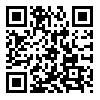Volume 12, Issue 2 (10-2020)
jorar 2020, 12(2): 93-101 |
Back to browse issues page
Download citation:
BibTeX | RIS | EndNote | Medlars | ProCite | Reference Manager | RefWorks
Send citation to:



BibTeX | RIS | EndNote | Medlars | ProCite | Reference Manager | RefWorks
Send citation to:
Ebrahimifar S, Naji-Azimi Z, Rahimnia F. Combination of SWOT Analysis, Analytic Hierarchy Process, and Monte Carlo Simulation to Identify the Strategic Positioning of Crisis Management at the Ferdowsi University of Mashhad, Iran. jorar 2020; 12 (2) :93-101
URL: http://jorar.ir/article-1-610-en.html
URL: http://jorar.ir/article-1-610-en.html
Faculty Member, Department of Management, Faculty of Economics and Administrative Sciences, Ferdowsi University of Mashhad, Mashhad, Iran
Abstract: (2816 Views)
INTRODUCTION: Iran has long been recognized as one of the most accident-prone areas in the world due to its special geographical location. Therefore, it is of utmost importance to devote special attention to crisis management in organizations and the identification of related strengths, weaknesses, opportunities, and threats.
METHODS: The present study aimed to identify the strategic positioning of crisis management after natural disasters at the Ferdowsi University of Mashhad as the center of excellence in the east of the country. To this end, the internal and external factors which militate against university crisis management were identified. Thereafter, the strategic positioning of this university was determined among four positions, namely offensive, defensive, adaptive, and contingency, using a combination of SWOT (strengths, weaknesses, opportunities, and threats) analysis, analytic hierarchy process (AHP), and Monte Carlo simulation, and strategies were presented. The statistical population were university facility experts and managers among whom 10 cases were selected by purposive sampling.
FINDINGS: Based on the obtained results, the highest weights in different sub-criteria were as follows: compliance with the required technical and safety standards in new constructions of the university campus (strength), the absence of any specific plan for dealing with various types of crises in different buildings (weakness), the proximity of the fire station to the university campus (opportunity), and indecisiveness of organizations supervising building retrofitting, including provincial government and Roads and Urban Development Office
(threat).
CONCLUSION: The results of the present study demonstrated that strategic positioning can be identified by analyzing internal and external factors. Moreover, among the four strategic positions, it was found that the Ferdowsi University of Mashhad adopted an offensive crisis management strategy in 45.4% of the cases.
METHODS: The present study aimed to identify the strategic positioning of crisis management after natural disasters at the Ferdowsi University of Mashhad as the center of excellence in the east of the country. To this end, the internal and external factors which militate against university crisis management were identified. Thereafter, the strategic positioning of this university was determined among four positions, namely offensive, defensive, adaptive, and contingency, using a combination of SWOT (strengths, weaknesses, opportunities, and threats) analysis, analytic hierarchy process (AHP), and Monte Carlo simulation, and strategies were presented. The statistical population were university facility experts and managers among whom 10 cases were selected by purposive sampling.
FINDINGS: Based on the obtained results, the highest weights in different sub-criteria were as follows: compliance with the required technical and safety standards in new constructions of the university campus (strength), the absence of any specific plan for dealing with various types of crises in different buildings (weakness), the proximity of the fire station to the university campus (opportunity), and indecisiveness of organizations supervising building retrofitting, including provincial government and Roads and Urban Development Office
(threat).
CONCLUSION: The results of the present study demonstrated that strategic positioning can be identified by analyzing internal and external factors. Moreover, among the four strategic positions, it was found that the Ferdowsi University of Mashhad adopted an offensive crisis management strategy in 45.4% of the cases.
Keywords: Crisis Management, Hierarchical Analysis Process, Monte Carlo Simulation, Strategic Positioning Identification, SWOT Matrix.
Article Type: Research article |
Subject:
Psychological support in disasters
Send email to the article author
| Rights and permissions | |
 |
This work is licensed under a Creative Commons Attribution-NonCommercial 4.0 International License. |







